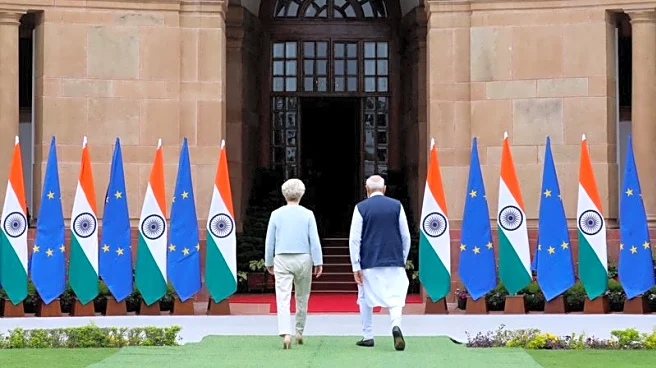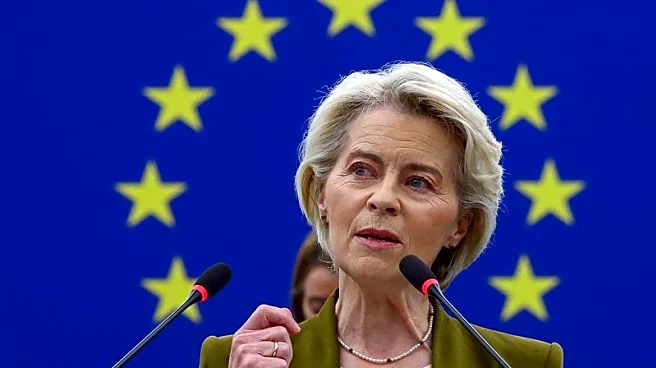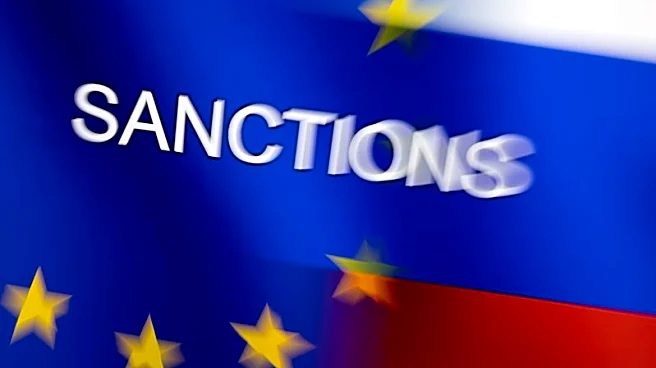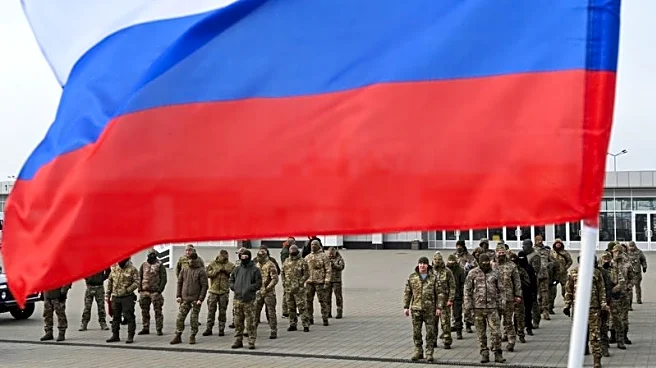What's Happening?
Germany has shifted its stance and now supports using frozen Russian sovereign assets to fund Ukraine's needs. This change comes amid concerns that if the U.S. reduces aid to Ukraine, Germany may bear a larger burden in supporting Kyiv. The Group of Seven (G7) countries initially froze approximately $300 billion in Russian central bank assets following Russia's invasion of Ukraine in 2022. European governments and G7 allies have been exploring ways to generate revenue from these immobilized funds. The European Commission is considering providing Ukraine with a reparations loan funded by the cash balance associated with the frozen assets. Discussions on generating further revenue from these assets are expected at upcoming EU finance meetings.
Why It's Important?
Germany's support for using frozen Russian assets to aid Ukraine marks a significant shift in European policy. This move could provide Ukraine with much-needed financial resources to continue its defense against Russian aggression. It also reflects the broader geopolitical dynamics, where European countries are increasingly taking responsibility for supporting Ukraine amid potential changes in U.S. foreign aid policies. The decision to utilize these assets could set a precedent for how frozen funds are managed in international conflicts, impacting future diplomatic and economic strategies.
What's Next?
The proposal to use frozen Russian assets for Ukraine will be discussed at the EU finance ministers' meeting in Copenhagen and the EU leaders' summit in October. A final decision is expected during the summit on October 23-24. If approved, this initiative could lead to new financial mechanisms to support Ukraine and potentially influence broader EU policies on asset management and reparations in conflict situations.











